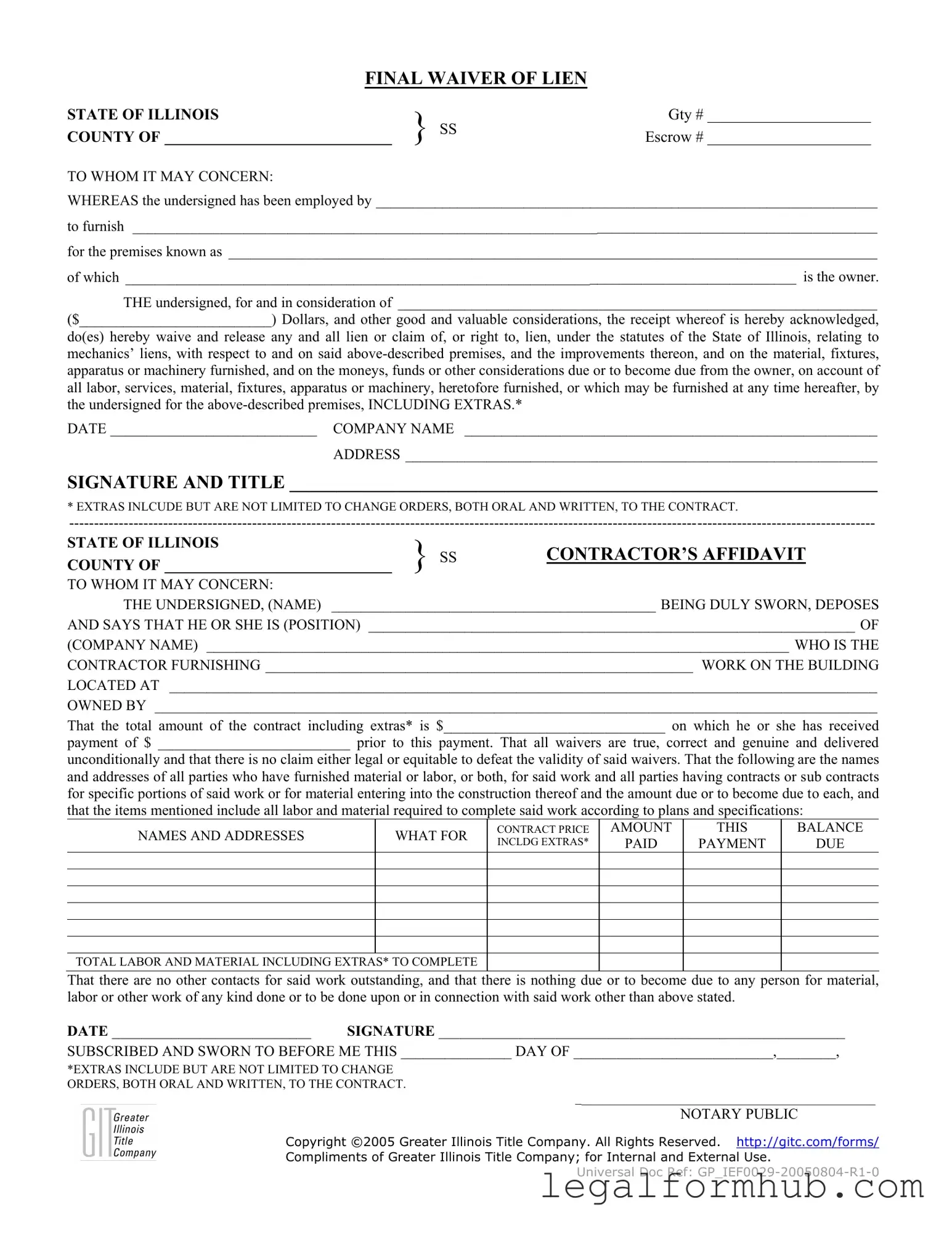The Illinois Final Waiver of Lien form closely resembles a document known as the Partial Waiver of Lien. This document serves a similar purpose but is used when a contractor or subcontractor wants to waive their lien rights for a portion of the total payment received, rather than the entire contract amount. Like the Final Waiver, the Partial Waiver provides assurance to the property owner that the contractor has been paid for the work completed up to that point. However, it does not release the contractor's rights to claim a lien for any unpaid amounts on the contract, making it a crucial document in ongoing projects where payments are made incrementally.
The California Employment Verification form is a crucial document that employers use to confirm a new employee's work eligibility in the state. This form outlines essential information about the employee, ensuring compliance with both state and federal regulations. For anyone navigating the hiring process in California, understanding and properly completing this form is essential, so Fill PDF Forms to streamline the process and meet the required standards.
Another document that shares similarities with the Illinois Final Waiver of Lien is the Contractor's Affidavit. This affidavit is a sworn statement from the contractor affirming that they have fulfilled their obligations under the contract and have paid all subcontractors and suppliers for their work. Like the Final Waiver, the Contractor's Affidavit is designed to protect property owners from potential liens. It provides a comprehensive overview of payments made and ensures that all parties involved have been compensated, thereby minimizing the risk of future claims against the property.
The Release of Lien form is another document that aligns closely with the Illinois Final Waiver of Lien. This form is used to formally relinquish any claim against a property after payment has been received. It is often utilized when a contractor has completed their work and has been compensated, similar to the Final Waiver. However, the Release of Lien can be used in various states and may have different stipulations based on local laws. Both documents serve to confirm that the contractor has no further claims against the property, thus providing peace of mind to the owner.
Lastly, the Subcontractor's Waiver of Lien is also similar to the Illinois Final Waiver of Lien. This document is specifically for subcontractors who have worked on a project and wish to waive their lien rights. Like the Final Waiver, it serves as a declaration that the subcontractor has been paid for their work and relinquishes any future claims against the property. The Subcontractor's Waiver is essential in the construction process, as it helps maintain clear communication and financial accountability among all parties involved, ensuring that the property owner is protected from potential lien claims.
